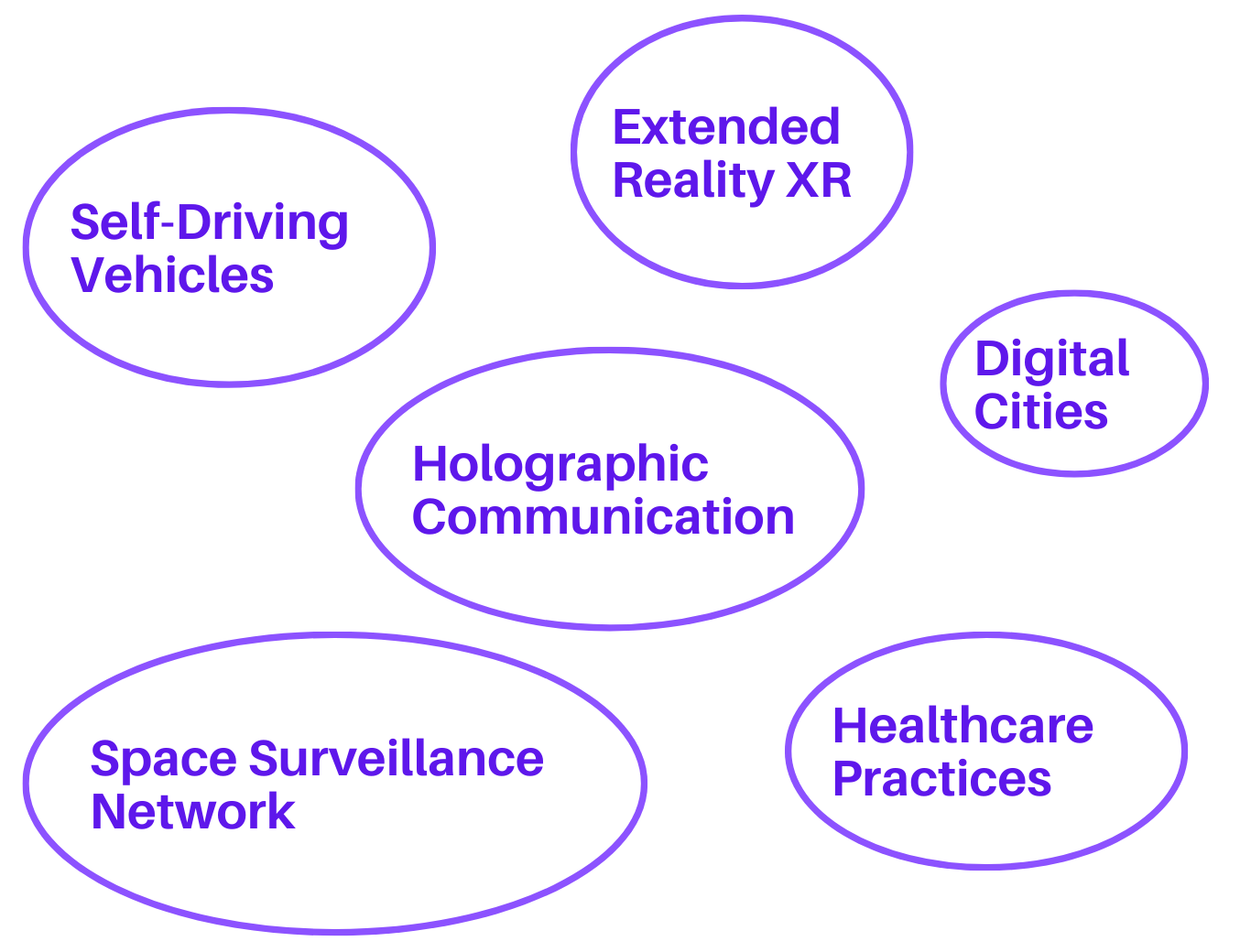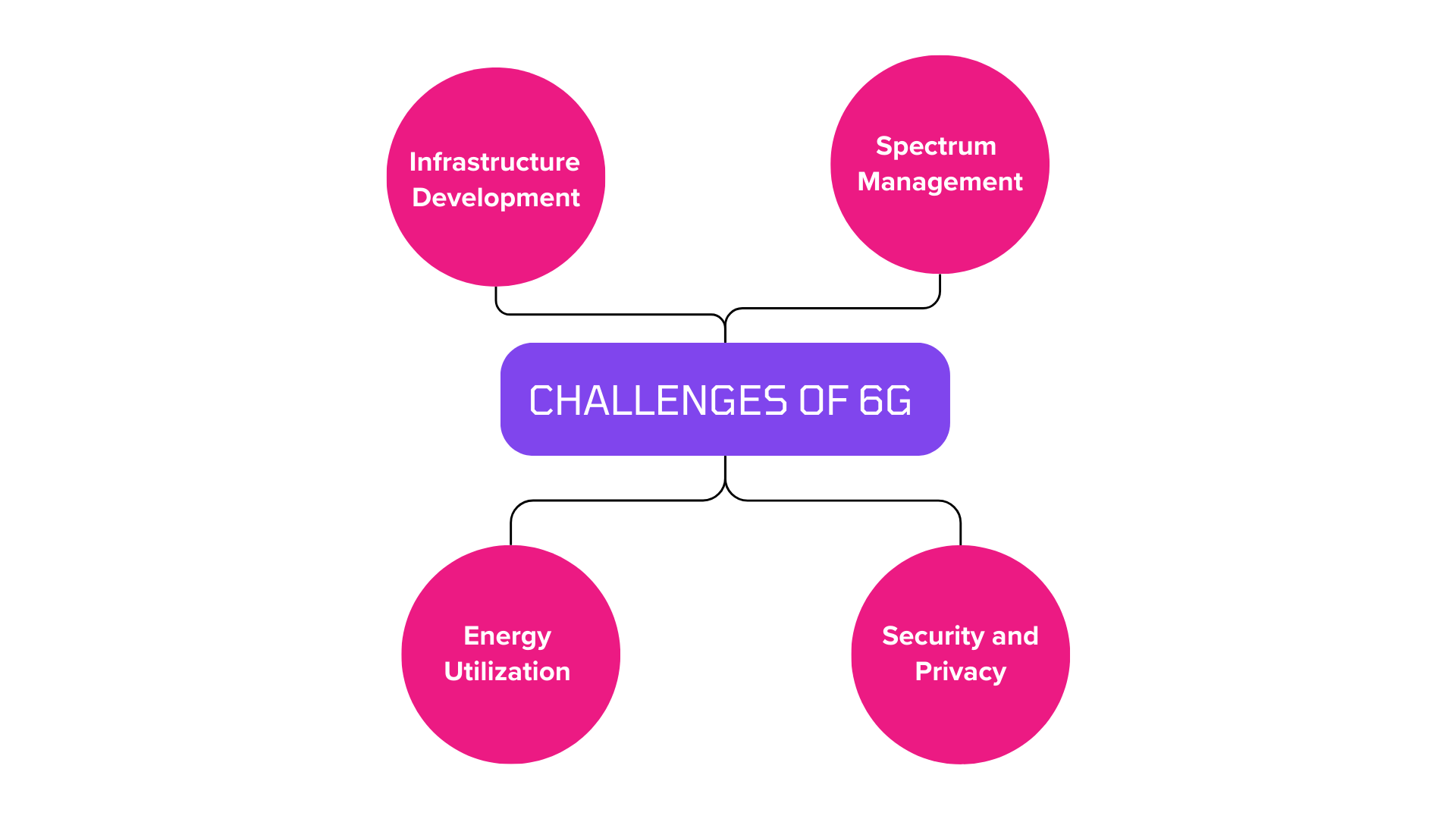6G networking aims to define the next generation of wireless communication technology. 6G will connect devices to the internet, enabling us to use smartphones, smart homes, autonomous vehicles, and much more seamlessly. But 6G will take connectivity to a whole new level, delivering faster speeds, lower latency (response time), and improved efficiency.
While 5G supports download speeds of up to 10 Gbps, 6G is anticipated to achieve speeds up to 100 times faster, potentially reaching 1 terabit per second (Tbps). This means downloading a full-length HD movie could take less than a second with 6G technology.
6G is not just about speed; it’s about building smarter, more integrated networks, capable of supporting futuristic technologies.
Key Features of 6G Networking
1. Ultra-High Speed Network
6G will deliver extremely fast internet speeds, much faster than today’s networks. This will allow flawless streaming and super-fast downloads on internet, even for the most demanding applications.
2. Ultra-Low Latency Network
Latency refers to the time it takes for data to travel from one device to another. Indeed, latency could drop to just 1 millisecond (ms) or less in 6G. This quick response time will be important for applications like remote surgery, autonomous-driving cars, and real-time virtual reality (VR).
3. Massive Connectivity
6G internet will connect billions of devices simultaneously; including smartphones, sensors, wearable technology, and smart appliances. This will enable the internet of things platform on a massive scale, creating smart cities and homes that are more efficient and responsive.
4. Artificial Intelligence Implementation
Artificial Intelligence (AI) will play a key role in 6G technology. AI will assist in managing the network, predicting traffic patterns, and boosting performance. This will result in faster and more reliable connections for everyone.
5. Extended Reach
6G aims to provide smooth coverage everywhere, from rural areas to busy cities. Earlier networks like 5G sometimes struggle in remote or densely populated areas.
6. Resource Efficiency
6G is designed to consume less power while delivering higher performance. This is beneficial for both the environment and the battery life of devices.
What can 6G Enable?
The advancements brought by 6G networking will enable technologies and applications that were once thought to be science fiction. Here are some exciting possibilities.
1. Extended Reality XR
6G will power the next generation of augmented reality AR, virtual reality AR, and mixed reality MR. Virtual meetings can fully take part in interactive games. In addition, AR tools can show useful information to the real world.
2. Holographic Communication
Video calls could transition to holographic communication with 6G technology. In holographic communication, 3D images of people appear as if they are right in front of you. Moreover, this could revolutionize business meetings, education, and entertainment industry.
3. Self-Driving Vehicles
Self-driving cars will depend on ultra-low latency and high-speed connectivity to communicate with each other and their surroundings. By enabling split-second decision-making, the 6G network enhances the safety and efficiency of these vehicles.
4. Digital Cities
6G internet will connect millions of sensors in smart cities, therefore; improving traffic flow, decreasing energy usage, and enhancing public safety. For example, streetlights could automatically adjust their brightness based on how many people are nearby. Similarly, emergency response teams could react more quickly in real time.
5. Healthcare practices
Remote surgery will become more precise and reliable with 6G’s ultra-low latency. Additionally, wearable devices will monitor health conditions more effectively, delivering real-time data to doctors and patients.
6. Space Surveillance Network
With 6G, devices will easily connect to satellites and space equipment. Notably, this could enhance global communication systems and open up new opportunities for space exploration.

Challenges of 6G
While the possibilities of 6G are exciting, there are significant challenges to overcome:

1. Infrastructure Development
Building the 6G infrastructure demands new hardware, advanced software, and substantial financial investment. Certainly, this includes deploying advanced antennas, satellites, and base stations.
2. Spectrum Management
6G will require access to extremely high frequency bands, including terahertz (THz) waves. Also, these frequencies can transmit vast amounts of data but face challenges such as limited range, and difficulty in penetrating obstacles.
3. Energy Utilization
While 6G aims to be energy-efficient, the large number of devices and data it will handle could still lead to high energy use.
4. Security and Privacy
While billions of devices are connected, protecting user data and preventing cyberattacks will be critical in 6G networks. 6G technology must address these concerns to keep users safe.
When will 6G become Available?
6G is still in the early phases of research and development. Experts predict that 6G will start becoming available around 2030, following a timeline similar to how 5G succeeded 4G. Moreover, governments, universities, and tech companies around the world are already collaborating to develop 6G standards and technologies.
Conclusion
6G networking marks the next leap in wireless communication standard, offering incredible speed, reliability, and connectivity. Although it’s still several years away, its potential to transform industries and improve lives is undeniable. 6G could unlock opportunities we can only dream of today. However, these opportunities include from immersive virtual reality to safer autonomous vehicles and smarter cities.
6G technology will unlock new possibilities while solving current challenges, making the world faster, smarter, and more connected than ever before. Additionally, it promises improved speed, efficiency, and reliability with cutting-edge communication capabilities.



